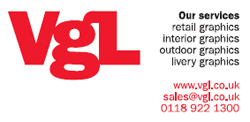A logo should be versatile enough to be a blank canvas

I disagree with most of this article (Patrick Argent’s blog What Happened to Identity, www.designweek.co.uk, 8 November).
When designing a logo, one very important thing to consider is its broader implementation and the extent of this. All three of these logos would create problems when they were implemented across the board. So, for example, the London Transport Museum logo might work well on a wall or on a letterhead, but could look awkward on a poster, which may be focusing on a particular mode of transport or era.
The point of modern logo design is to be succinct, adaptable, timeless and economic. There is nothing economic about any of the branding cited above. The LTM logo is a five-colour illustration of rail progress over the years. Economic? Really? The National Grid logo, while I’m sure it looked great at the time, is a monstrous tangle of lines and, in a Thatcherite kind of way, deeply depressing. And while the Royal Armouries Museum Leeds illustrations are good, this branding doesn’t herald great economy or versatility.
I’m not arguing that the replacements for these three institutions are good or better, but in modern times a logo has to do so much more than it used to, on and within a huge variety of new and old media. Logos these days need to be a blank canvas for a designer, and need to work with any idea that it is thrown up against.
A truly great logo will have done all this since its inception and should never need renewal. Take the Nike logo, as fresh today as it was when it was born. Not true at all for the three cited above.
Peter Moffat, by e-mail
-
Post a comment



